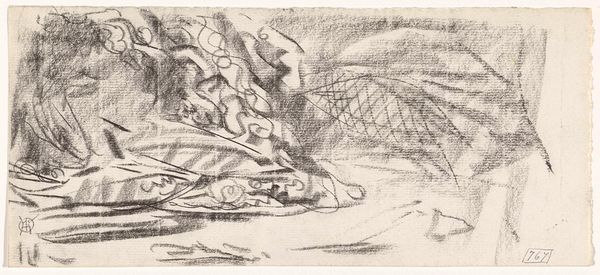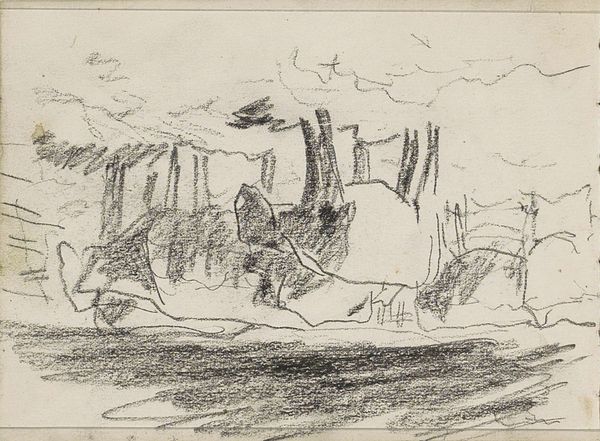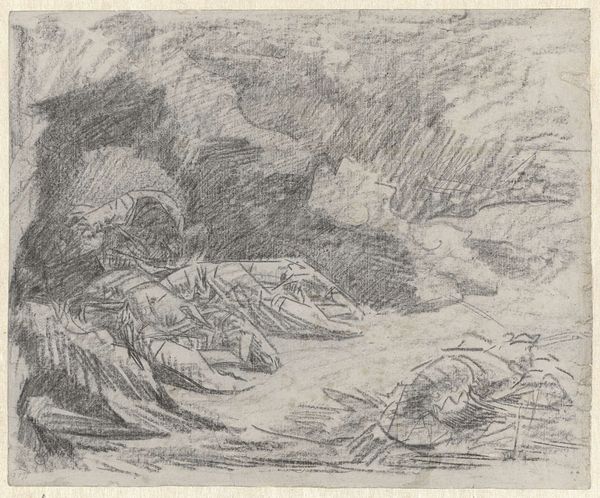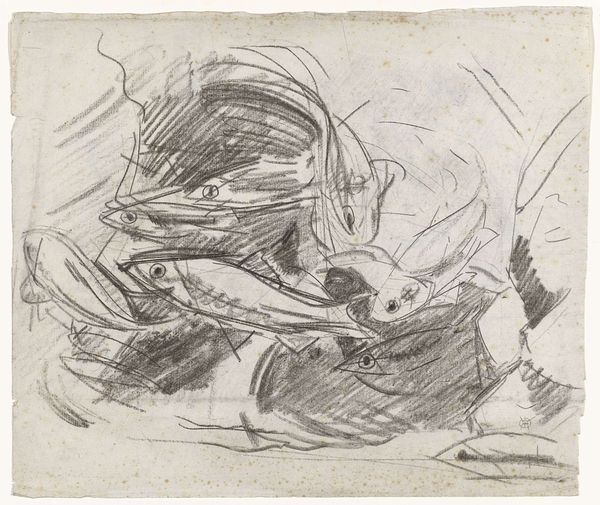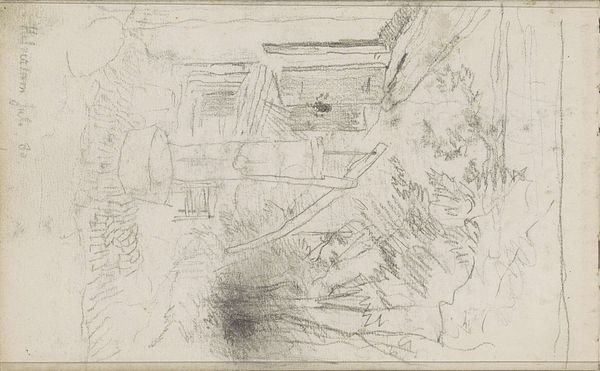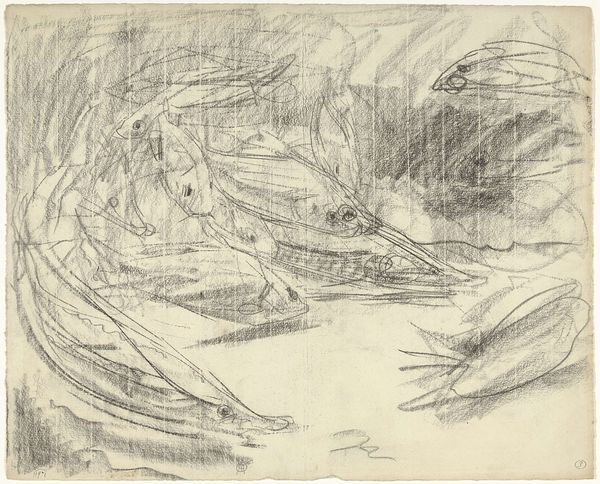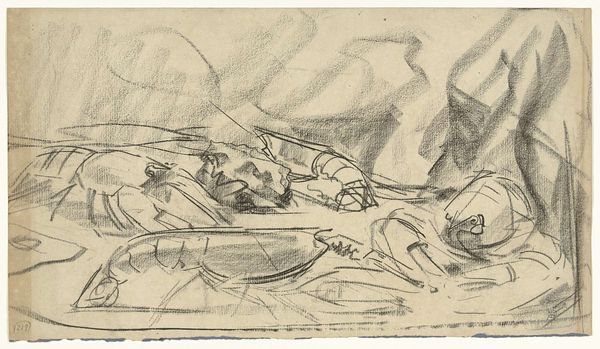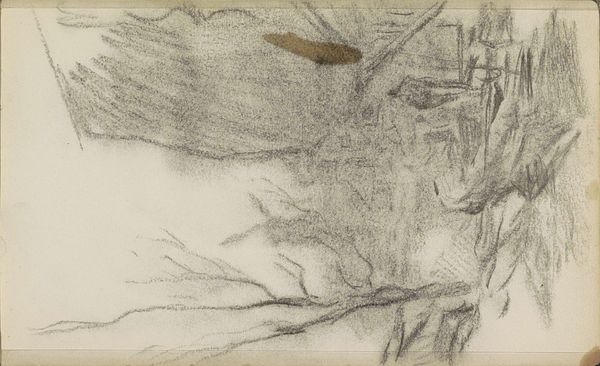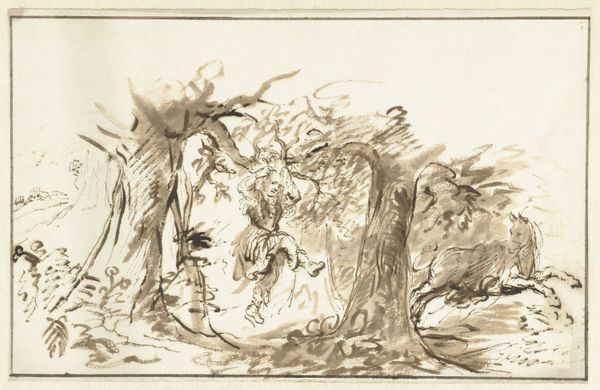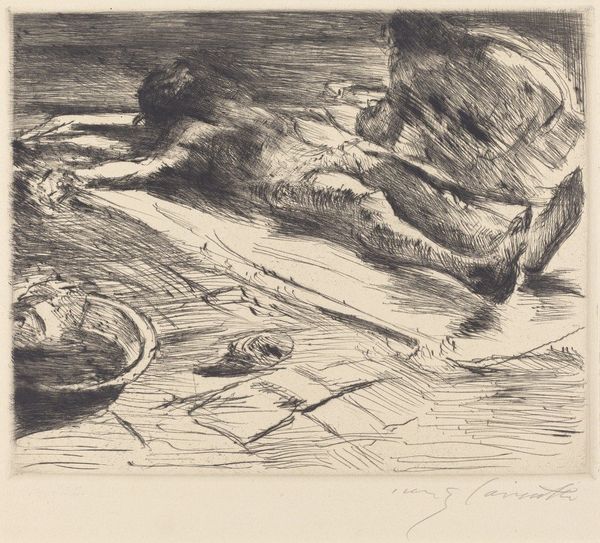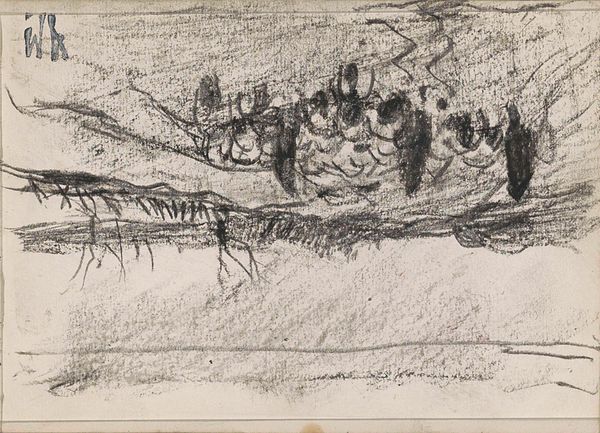
drawing, graphite
#
landscape illustration sketch
#
drawing
#
pen illustration
#
pen sketch
#
landscape
#
form
#
ink line art
#
personal sketchbook
#
linework heavy
#
ink drawing experimentation
#
pen-ink sketch
#
abstraction
#
line
#
pen work
#
graphite
#
sketchbook drawing
Dimensions: height 345 mm, width 424 mm
Copyright: Rijks Museum: Open Domain
Editor: Here we have Gerrit Willem Dijsselhof's "Vissen in aquarium met rotspoort," or "Fish in Aquarium with Rock Gate," a drawing made sometime between 1876 and 1924 using graphite and pen and ink. It strikes me as a sort of imagined ecosystem, a collection of different forms bumping against each other. What do you see in this piece? Curator: I see a commentary on constructed environments and the inherent limitations they impose, wouldn’t you agree? The aquarium, with its artificial rock gate, immediately brings to mind the politics of containment and control, paralleling human interventions in natural systems. The fish, then, become symbols of forced adaptation. Editor: I hadn't considered that angle, the idea of "forced adaptation." So, the composition, the way the fish are rendered, that’s significant? Curator: Absolutely. Notice how the linework varies, some areas dense and restricting, others loose, suggesting a yearning for open water? How might we read that in relation to societal constraints and the desire for freedom, for decolonization of thought? Is the artist perhaps making a statement about the illusion of freedom within carefully curated spaces, mirroring the ways in which society polices our bodies and behaviors? Editor: I see your point. The 'rock gate' suddenly feels less like a natural formation and more like a border, a barrier. Curator: Precisely! Think about the late 19th and early 20th centuries, the rise of industrialization and the confinement it brought. Do you think Dijsselhof might be reflecting on these changing social dynamics through his art? What is freedom if its parameters are determined elsewhere, or even created? Editor: That's a lot to unpack. I originally saw it as a simple aquarium sketch, but I'm leaving with a completely different perspective now, about freedom, barriers and the role of visual representation in commenting on power. Curator: That is exactly the point. To critically analyze and deconstruct is to begin a necessary journey.
Comments
No comments
Be the first to comment and join the conversation on the ultimate creative platform.
